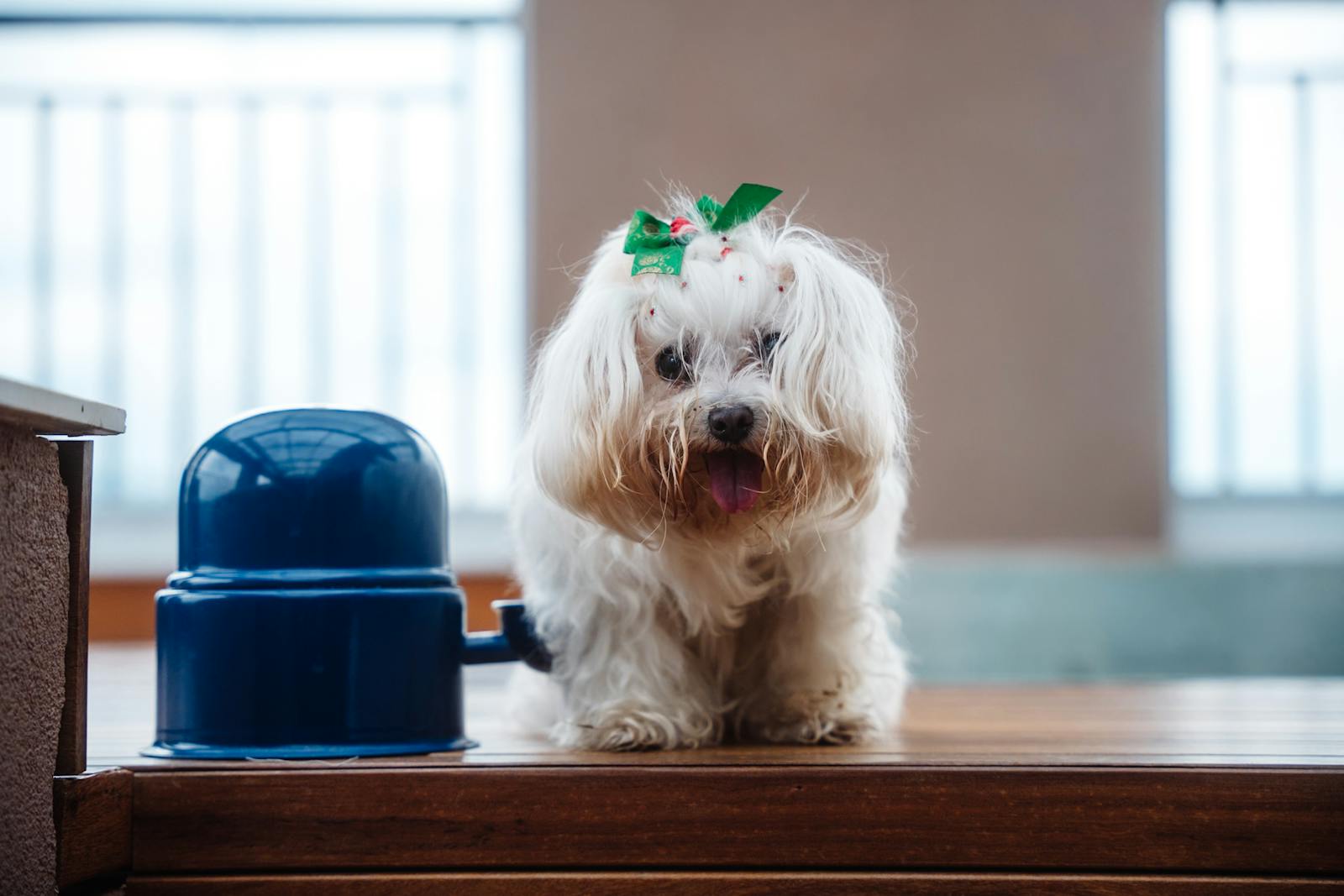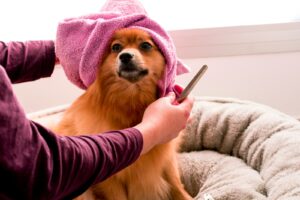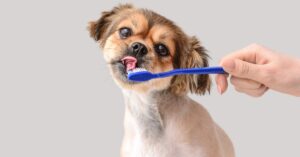Your furry friend will thank you for your time to ensure their fur and skin stay healthy.
Grooming your puppy is vital for aesthetics, keeping them clean, and preventing injuries, infections, and disease.
If you have a dog, you know they can be a lot of work. But if you take the time and effort to groom them correctly, you’ll both benefit.
Table of Contents
1. Start Grooming Early
Introduce grooming routines as early as possible to help your puppy get comfortable with the process. Gentle brushing, nail handling, and ear checks from a young age will make them less anxious during grooming sessions as they grow.
- Gradually increase the duration and complexity of grooming sessions as your puppy grows.
- Introduce them to different grooming tools (brushes, nail clippers) so they become familiar with them.
- Use positive reinforcement like treats or playtime after each session to create a fun association with grooming.
2. Use Puppy-Safe Products
Always use grooming products specifically formulated for puppies. Their skin is more sensitive than adult dogs, so opt for mild shampoos, conditioners, and wipes that are free from harsh chemicals.
- Look for hypoallergenic and fragrance-free products to avoid irritating your puppy’s sensitive skin.
- Avoid human grooming products, as they may not be safe for puppies and can cause skin issues.
- If your puppy has a specific skin condition or allergies, consult with your vet for recommended products.
3. Brush Regularly
Brush your puppy’s coat at least a few times a week to remove loose hair, prevent tangles, and distribute natural oils. Use a brush designed for their coat type to avoid discomfort.
- Pay special attention to areas that mat easily, like behind the ears or under the legs.
- For long-haired breeds, consider using a de-shedding tool or comb to help with tangles and loose fur.
- Be gentle and patient, as rough brushing can cause discomfort or harm their skin.
4. Trim Nails Carefully
Long nails can be uncomfortable for your puppy and cause health issues. Use a puppy nail clipper or grinder and trim their nails carefully to avoid cutting the quick, which can be painful.
- Trim a little at a time to avoid cutting the quick, which is sensitive and can cause bleeding.
- If unsure, ask your vet or groomer for a demonstration on proper nail trimming techniques.
- Keep your puppy calm and distracted with treats or toys while you trim their nails.
5. Check and Clean Ears
Puppies’ ears can accumulate dirt and wax, leading to infections. Gently clean their ears with a vet-approved ear cleaner and a cotton ball. Avoid inserting anything into the ear canal.
- Regularly inspect the inside of their ears for any signs of redness, swelling, or discharge.
- Avoid using cotton swabs inside the ear canal, as this can push debris further in.
- If your puppy shows signs of ear discomfort (scratching, head shaking), consult with your vet to check for infections.
6. Brush Their Teeth
Dental care starts early! Use a soft puppy toothbrush and dog-safe toothpaste to clean their teeth 2-3 times a week. This helps prevent plaque buildup and promotes healthy gums.
- Start with small amounts of toothpaste to help your puppy get used to the taste and texture.
- Introduce dental chews or toys to supplement brushing and promote oral health.
- Be consistent with dental care to prevent the buildup of tartar and plaque.
7. Bathe as Needed
Puppies don’t need frequent baths—once a month is usually enough unless they get particularly dirty. Use lukewarm water and puppy-safe shampoo, and dry them thoroughly to avoid chills.
- Be mindful of the water temperature—lukewarm water is best for puppies.
- Avoid getting water into their ears to prevent infections, especially in breeds with floppy ears.
- Use a towel or puppy-safe dryer to gently dry them after the bath, ensuring they’re not chilled.
8. Keep Eyes Clean
Gently wipe around your puppy’s eyes with a damp, soft cloth to remove tear stains and debris. This prevents irritation and keeps their face clean.
- For puppies with longer fur, keep the hair around the eyes trimmed to prevent irritation.
- If tear stains become a persistent issue, consult your vet for advice on possible underlying causes.
- Be gentle when wiping their face, as the skin around the eyes is very sensitive.
9. Introduce Professional Grooming
If your puppy’s breed requires professional grooming, start taking them to a groomer early. This helps them get accustomed to the environment and ensures they’re comfortable during grooming sessions.
- Look for a groomer who specializes in puppies to ensure they’re patient and experienced.
- Start with short grooming sessions and gradually increase the time spent with the groomer.
- Ensure the groomer uses gentle techniques to make the experience as stress-free as possible.
10. Make Grooming Positive
Reward your puppy with treats, praise, and cuddles during and after grooming sessions. A positive experience will make them more cooperative and less stressed in the future.
- Keep grooming sessions short and sweet to avoid overwhelming your puppy.
- Create a consistent grooming routine so your puppy knows what to expect.
- Use calming music or a quiet environment to help your puppy relax during grooming.
Conclusion
By following these essential grooming tips, you’ll not only keep your puppy looking their best but also ensure they’re healthy and happy.
Start building these routines now, and enjoy the special bonding time grooming brings! 🐾





